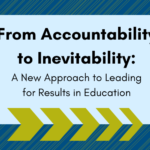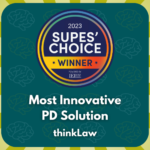By M. Neil Browne and Stuart M. Keeley
Do you like to read but don’t have enough time? Don’t worry! We’ve got your back! Introducing the new thinkLaw book report series. We’ll do the reading for you AND make a connection to our shared work in the critical thinking
I’m excited to start off the latest thinkLaw blog series with Asking the Right Questions. Could there be a more relevant book for our work? (Actually, maybe… we plan to find out as this series continues!) The authors are well-known experts in the critical thinking field—as well as professors of economics and psychology.
Want to make critical thinking available to your students? Download this TeachersPayTeachers lesson to have them thinking like lawyers!
The authors begin by proposing that there are two types of thinking styles: the sponge and panning for gold. ‘Sponge thinkers absorb as much knowledge as they can. With the panning for gold approach, thinkers pick and choose what to absorb and what to ignore.
‘Panning for gold’ is interactive —the thinker must constantly ask questions. While reading, the thinker must imagine the writer is speaking directly to him or her and consider what questions they would ask.
Despite the emphasis on asking questions, the authors caution that the idea of a “right answer” is a myth. While some disciplines—such as science—have correct answers to questions, social controversies and human behavior do not have right or wrong answers.
The authors encourage readers to pan for gold in every situation by providing probing questions. A few examples of questions thinkers should always be asking are:
- What words or phrases are ambiguous?
- Are there rival causes?
- Are there any fallacies in the reasoning?
- How good is the evidence?
- What significant information is omitted?
- Are the statistics deceptive?
The authors conclude that critical thinking is not limited to the classroom and that everyone benefits when people ask these probing questions in their everyday life.
The Take-Away:
Our students have no shortage of information. Google “cancer.” You have 1,490,000,000 results instantly. How do you wade through over a billion results? We need to ask probing questions and model the same skills for our students.
Modeling this approach doesn’t require a lot of planning. On any given day there are plenty of examples of articles that should be read with a critical approach. For example, a few weeks ago I read a headline that said, “Having Chocolate Cake for Breakfast is Good for You and Might Even Help You Lose Weight, Says Expert.” At face value, that is a headline I can get behind! But before I dump my oatmeal in the trash, I should probably stop to ask a few questions. How often can you have chocolate cake? What problems are created by eating chocolate cake for breakfast? Do those problems outweigh the benefits? Who is this expert?
I could easily model this process with my class by completing a think-aloud or asking them to help me brainstorm critical questions that should be asked.
We should constantly help our students add powerful questions to their critical thinking toolbox and this book has a lot of great questions!









Leave a Reply